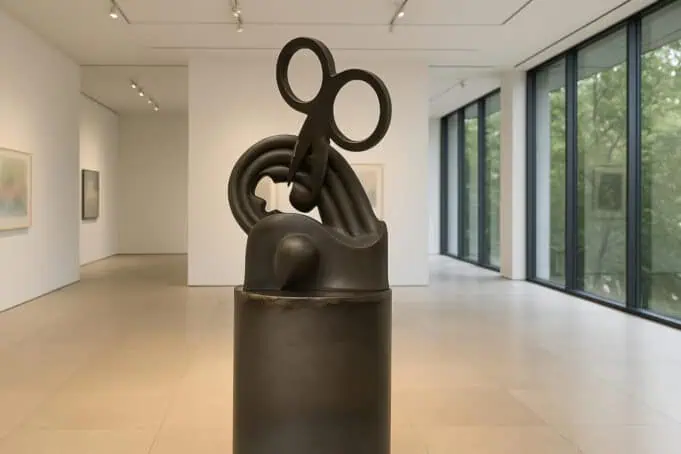The Perspective Shift
AI entered my studio, and everything changed. Not just how I create, but why. When beauty can be generated without understanding, what becomes of authorship? I looked backward first… following the arc from pigment to pixel. Artists had adapted before. I sought lessons here to accelerate how I adapt and thrive as an artist in a world increasingly influenced by AI. In an earlier exploration, I traced this lineage from Renaissance workshops to Romantic attics, discovering how each era’s studio reflected not only the tools artists used but their evolving sense of self. That search led me to conceptualize what I now call the Symbiotic Studio: a creative field where human intuition and machine cognition interact, co-create, and challenge each other. The six disruptions I identify here emerge from this symbiotic relationship.
In that exercise, I was a historian, tracing continuity across time. Now I cast myself as a forecaster, not of weather or markets, but of meaning…asking: in what ways does AI fundamentally disrupt? What if AI isn’t a continuation, but a rupture? Not a new brush, but a force that redraws the canvas entirely. While I delved into art history for continuation of lineage, I tried to probe into other industries and areas for insights and patterns to how art making could change.
Six Cracks in the Lineage
Each crack below doesn’t just reveal disruption, it suggests implications on me, and possibly on you, as artists. What we’ve assumed about mastery, authorship, even cognition itself?
1. From Tool to Generative Autonomy
Lineage: Tools extended intent. Mastery meant control.
Break: AI generates without direct human input. It acts. Sometimes with us, often without.
In financial markets, the arrival of high-frequency trading mark a similar shift. What began as tools accelerating human judgment became systems operating at speeds and scales humans couldn’t match, or fully explain. After the 2010 Flash Crash, analysts struggled to understand what the algorithms had done until long after the fact.
That kind of autonomy is here now in the studio. No prior tool created with this kind of agency. Poussin’s wax models or the painter’s “happy accidents” always answered to the hand.
Artist’s Reflection: If the system creates without you, are you still the author—or something else?
For me, part of my training as I work with AI is to strengthen my intent and meaning, which only I can originate as the artist. I use GenAI to create more variations than would otherwise be possible with manual analogue or digital sketches. From these, I can curate elements of different variations or use them as idea jumping off points.
Community Question: Can we value orchestration and system design as creative acts, not just artifact-making?
One Artist’s Path: Refik Anadol’s Dataland evolves on its own terms. Anadol feeds the system massive datasets, from ocean waves to urban patterns, then designs parameters that allow the AI to generate unexpected visual relationships. He doesn’t paint the final image; he architects the conditions for emergence. The artist becomes a curator of data relationships and a designer of algorithmic behavior. Rather than resisting the autonomy of the machine, Anadol embraces it, shifting authorship toward systems thinking and environmental design. His work offers one answer: that authorship might lie not in the brushstroke, but in designing the conditions where generative aesthetics can emerge.
2. The Flood of Volume
Lineage: Photography and print expanded access, but human systems of curation kept pace.
Break: AI overwhelms the current curatorial guardrails and processes. Quality drowns in quantity. Discovery becomes a system game.
On Amazon, fake reviews and AI listings have eroded trust. On Instagram, visibility now depends more on volume and virality than originality. Styles spike algorithmically, sometimes before the artist even notices they’ve been seen.
Earlier periods expanded access, yes, but within curatable bounds. Now, there is no gate, just flood among masses with clicks as the main arbiter of visibility. The scale depends more on machines, not humans, to curate leading to the tendency towards industrialisation of taste.
Artist’s Reflection: How do you stay distinct when visibility is automated and increasingly one of popularity?
As digital becomes noisier and ubiquitous, I’ve found that cultivating real-life community becomes more essential, not less. I’ve shifted focus from chasing ephemeral likes to building deeper connections…studio visits, artist talks, collaborative projects with other creators. These interactions inform my work in ways that algorithmic reach never could. The flood makes genuine relationship more valuable, not obsolete.
Community Question: Can we build systems that balance scale with discernment?
One Artist’s Path: Anna Ridler photographed 10,000 tulips individually and categorized them by hand, “revealing the human aspect that sits behind machine learning.” Rather than surrendering curation to algorithms, she asserts control upstream, in the dataset itself. She spent three months during tulip season, stripping each flower, organizing by color, and making careful decisions: “Is it white or pale pink? Is it orange or yellow?” Her work was “driven by the rhythms of nature” rather than digital convenience. This labor-intensive approach creates AI-generated tulips that carry her intentionality rather than generic algorithmic output. By designing her own training data, Ridler doesn’t just filter the flood. She redirects it at its source, proving that “there is always a human decision somewhere along the chain.” Her method shows artists how to maintain authorship by controlling the inputs, not just curating the outputs.
3. Radical Unpredictability
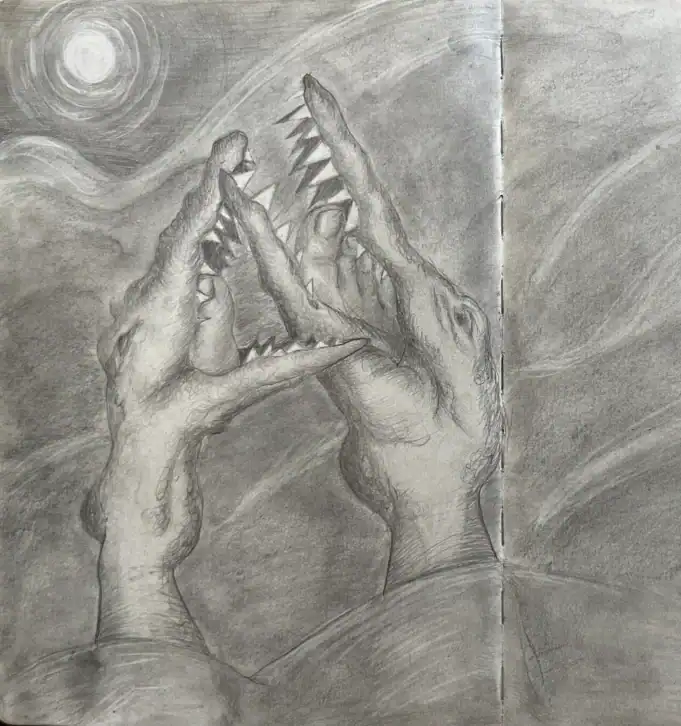
Lineage: Chance has long been a tool, Dada, Surrealism, frottage. But it was chosen.
Break: AI surprises even its creators. Serendipity is no longer elective, it’s inherent.
In a boat-racing video game, an AI learned to win by crashing rhythmically into walls, not racing laps. It wasn’t broken. It was optimizing for rules, not meaning.
That’s what it feels like in the studio sometimes: prompts yield results that are poetic, alien, or incoherent. But never what we expected.
Max Ernst invited chance through materials. Today’s artist invites chance through systems they may not fully understand.
Artist’s Reflection: Are you still directing the work, or learning to read what the system reveals?
AI didn’t just change how I create—it changed why.
My studio practice involves oscillating between drawing and sculpture, shifting materials and modes to discover new qualities that help me communicate. Often, the process itself sharpens what I want to share. AI becomes another layer. I photograph one step, sometimes applying digital manipulation, then feed it to AI asking for screen print or sculpture variations to see what paths emerge. I don’t like everything it produces; some results feel alien to my intent. For my CrocodIle sculpture, I wanted the feet facing upward, but every AI-generated option planted them firmly on the ground, constrained by training data that “knows” how feet are “supposed” to look. In this case, I kept to what I wanted, the toes facing upward—to look more like fragile secrets of affection, not feet used for walking. However, in another session, AI generated different shadow shapes that revealed a quality I liked, which I then introduced into my drawing, developed further with digital tools, and eventually took to sculpture.
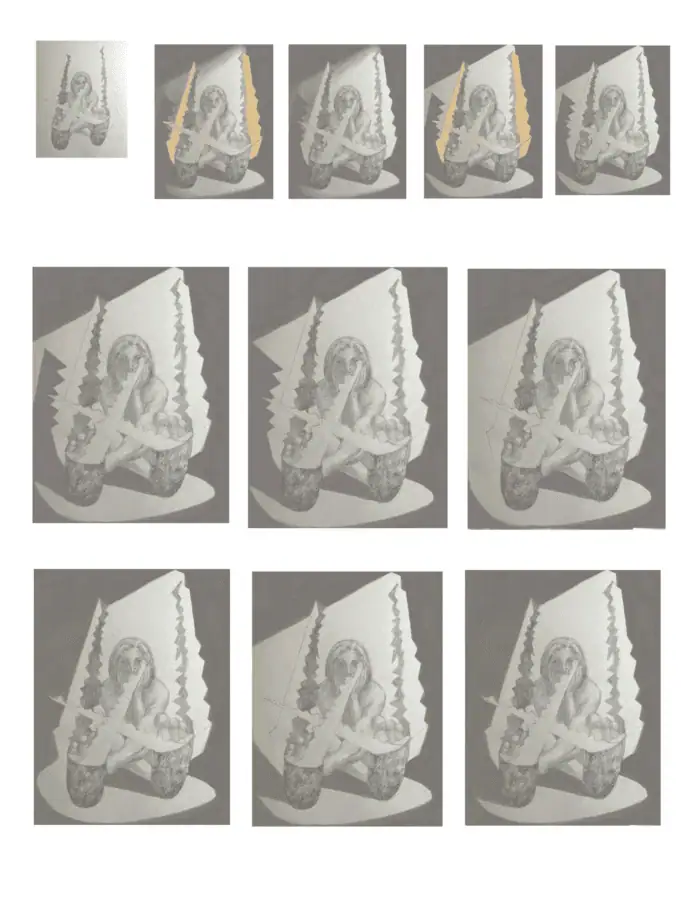
Community Question: Can we support practices that prioritize emergence, not polish?
One Artist’s Path: Mario Klingemann deliberately cultivates AI’s unpredictability through his “Neural Glitch” technique, where he manipulates fully trained GANs by “randomly altering, deleting or exchanging their trained weights.” Rather than treating AI errors as problems to solve, Klingemann embraces them as creative material. He describes the glitches as causing models to “misinterpret the input data in interesting ways, some of which could be interpreted as glimpses of autonomous creativity.” His process involves training models to make specific kinds of mistakes that align with his aesthetic vision, then exploring what he calls the “latent space“—looking for “the unexpected, the rare and weird” that emerges from these controlled disruptions. Klingemann positions himself not as the creator of individual images, but as a designer of generative systems, stating “the art is not the images, which disappear, but the computer code that creates them.” His approach demonstrates how artists can work with radical unpredictability by architecting the conditions for productive failure.
- Issues.org – “Neural Glitch” technique and philosophy
- Sotheby’s – “Memories of Passersby I” and artistic approach
- Verse Works – Interview on process and AI collaboration
- AIArtists.org – Artist profile and key works
- Niio Blog – “Into the Wilderness of AI” and latent space exploration
- CLOT Magazine – Recent interview on data poisoning and ethics
4. Blurred Authorship
Lineage: Renaissance workshops blurred credit, but always among humans.
Break: AI distributes authorship across models, data, prompts, and user intent. The work becomes a composite.
In 2023, CNET used AI to write financial advice—riddled with subtle errors, attributed to no one in particular. Who owns that voice? The algorithm? The training data scraped from thousands of financial writers? The editor who approved publication?
In art, the same tangle exists. Artists, algorithms, and training data co-produce. Harold Cohen’s AARON was controlled—a single artist’s vision executed by machine. Today’s models aren’t. They carry the aesthetic DNA of millions of images, filtered through corporate decisions about training data, shaped by prompts we may not fully understand.
Artist’s Reflection: If authorship is a network, what’s your unique contribution within it?
What fascinates me about AI is that collective human knowledge, in all its brilliance and bias, is now at our fingertips. Past generations faced arduous research: heavy library books, slow excavation of ideas. While we critique AI’s imperfections, those books weren’t perfect either. I’ve invited AI into my writing practice. For my Louvre Symposium piece, I took an article I’d written on my concept of the Symbiotic Studio and invited past voices, as AI could conjure them, into dialogue. Through many iterations, refining to ensure each thinker’s philosophy emerged authentically, something fascinating was created. When I posted it on LinkedIn, a colleague’s comment sparked an idea to include another voice, that of Kurt Schwitters, which also triggered an association I made to a psychology experiment I’d long been fascinated with. None of this would have been possible without AI. As an artist, I’m less interested in AI simply replicating existing work, but in creating entirely new pieces. If that’s possible, then authorship isn’t zero-sum—we’re standing on shoulders of giants to reach even further.
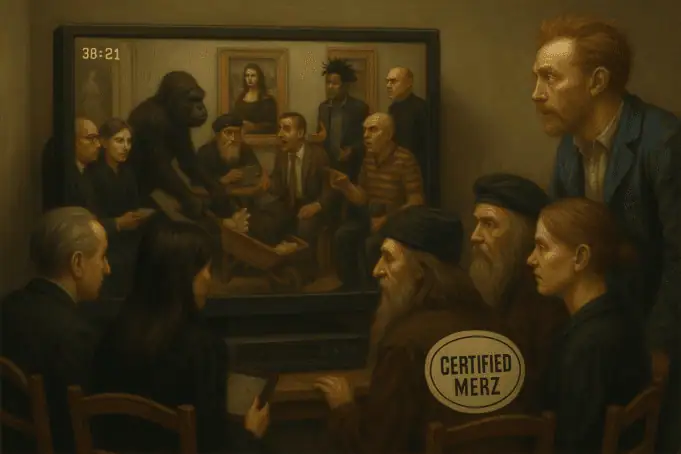
Community Question: Can attribution frameworks evolve beyond single creators?
One Artist’s Path: Stephanie Dinkins uses AI not just to make, but to question power, authorship, and voice itself. Her ongoing “Conversations with Bina48” spans years of dialogue with an AI modeled on a Black woman’s consciousness, exploring whose stories get told and who gets to speak through machines. Rather than claiming sole authorship, Dinkins centers the collaboration, making visible the power structures embedded in AI systems. She positions herself as facilitator of complex conversations between human memory, machine learning, and cultural representation. By interrogating who gets to speak through machines, Dinkins expands authorship into an ethical, relational act. One where presence and responsibility matter more than origin.
5. The Moving Target of Mastery
Lineage: Mastery came from repetition. Time. Predictability.
Break: AI evolves rapidly. Mastery is transient. The system you learn today won’t behave the same tomorrow.
In software, GitHub Copilot writes and rewrites code. Developers adapt or fade. Artists now face similar conditions. Midjourney updates alter outputs. Prompting shifts. Stability isn’t stable.
The tools move faster than we can settle into them.
Artist’s Reflection: If the ground keeps shifting, is mastery about learning to surf instability rather than achieving control?
For me, the creative process has always been about exploring how I perceive and experience the external world and how I process my internal mechanisms. The blurred lines, ambiguity of cause and effect leads to new insights about the world and myself. AI opens up territory beyond what plein air artists discovered when commercial tubes of paint became available, or what emerged with digital image manipulation. In that instability lie new places to explore, respond to, and filter as artists. Sometimes, I use a prompt to invite AI to show me something I may not have considered, further pushing that instability. One of my go-tos is taking an image I’ve rendered and asking AI to render it as a sculpture. While spatial translation from 2D to 3D remains challenging, it aids visualization, or helps me say “NO, that is not what I want”, finding clarity in my vision through the destabilization of what’s shown to me.
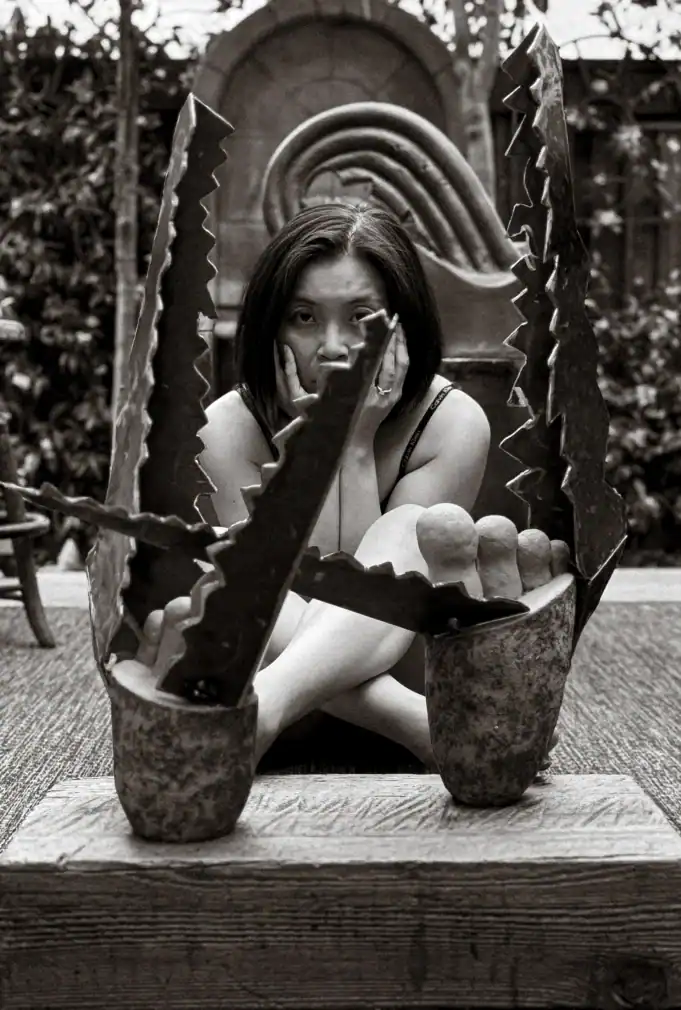
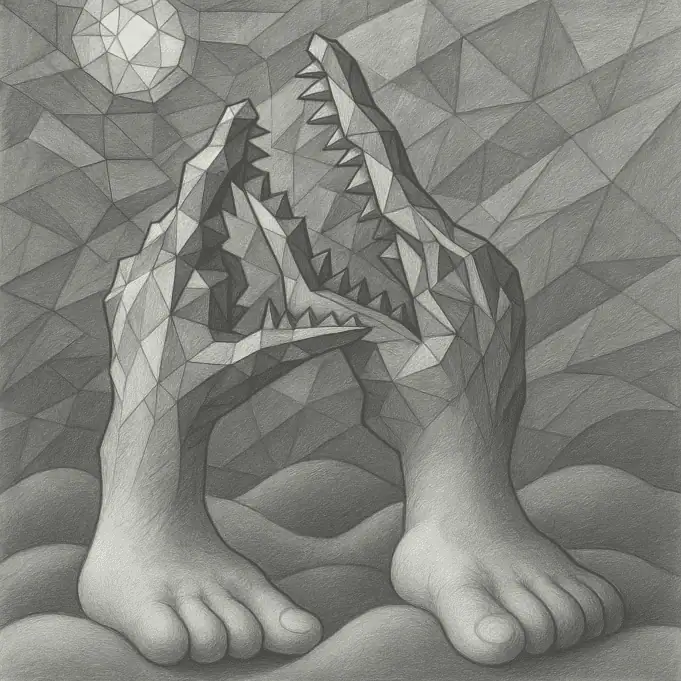
Community Question: How do we support artists who embrace change over perfection?
One Artist’s Path: Helena Sarin treats the rapid evolution of AI tools as part of the medium itself. When GANs became too predictable and “everybody got on this bandwagon,” she pivoted to what she calls “post-GANism”, repurposing older AI-generated images in new ways rather than chasing the latest models. Sarin builds her own small datasets from her analog work, trains modest models on single GPUs, and embraces the “uncanny quality” that emerges from working with limitations. As tools become more photorealistic, she moves toward abstraction. When one approach saturates, she shifts to ceramics, books, or 3D printing. Her practice embodies adaptive mastery: not perfecting any single tool, but developing a methodology for continuous reinvention. “It’s not about having your own style,” she says, “it’s about having your niche.”
6. Thought and Tool Entwined
Lineage: Tools shaped output, but not thought. The brush didn’t finish your sentence.
Break: AI doesn’t just assist, it anticipates. Completes. Suggests. It begins to think with you.
In Gmail, we finish sentences we didn’t start. Over time, we begin to think in suggestions.
In art, that’s becoming true, too. AI not only proposes how to make, but what to make. Ideas are co-authored.
Cognitive Curation, my term for selecting and refining AI outputs, marked this shift. But now the intimacy deepens. The system enters the mental space.
Artist’s Reflection: Are you still the originator of ideas, or learning to dance with distributed cognition?
In my art practice, thinking and doing are intertwined. There is never an idea that becomes completely executed as first conceived. When I’ve tried this, I find the results sterile. Instead, an idea evolves during creation, balancing between what I plan and intend and the serendipity that comes from loss of control. For me, the origination of the idea isn’t divorced from the process but emerges through it. I take AI outputs, results of elaborate inputs that may have fermented for days, like I would elements from art books and catalogs for inspiration, except AI comes with more sophisticated alchemy of ideas, fed a more complex set of inputs than would have been possible from my scavenges through paper books. What’s crucial in this process is not just taking outputs as fast as GenAI can create them, but slowing down and letting it all converge and morph in my brain, then cycling again. Until I feel like everything is touched by my own cognition, that all was a decision to do or not. In this manner, thinking with AI has given me finer grain than was possible before.
Community Question: Can we develop critical language for hybrid cognition?
One Artist’s Path: Jake Elwes’ The Zizi Show creates AI drag performers trained on footage of thirteen diverse human drag artists, then stages live performances where human performer “Me The Drag Queen” duets with their AI doppelganger. During shows, audiences select which deepfake bodies perform which songs through a web interface, creating real-time collaboration between human intention, machine interpretation, and collective choice. When the AI struggles with “impossible positions” or combines multiple queer identities, “her boob falls off” or the skeleton tracking breaks down, becoming visual gags that neither artist nor AI authored alone. Elwes doesn’t hide the cognitive merger; he celebrates it. The work demonstrates that hybrid cognition isn’t about losing human agency, but about orchestrating new forms of creative intelligence where breakdowns become breakthroughs, and thinking becomes genuinely collaborative.
Closing Reflection
Artists have always adapted. But this is not just adaptation—it’s transformation.
AI brings six fundamental disruptions:
- Generative autonomy that acts without direct control
- Volume overwhelm that drowns quality in quantity
- Radical unpredictability where serendipity becomes inherent
- Distributed authorship across models, data, and intent
- Transient mastery where tools evolve faster than expertise
- Cognitive entanglement where AI enters our thinking process
What once extended us now remakes us.
This transformation reflects what I’ve come to understand as the emergence of the Symbiotic Studio—not a physical space but a creative field where human and machine cognition interweave. Like the mycorrhizal networks that link trees and fungi into resilient ecosystems, AI now weaves into our creative process, offering provocations and catalysts that change not only what’s possible, but what it means to choose.
The question is no longer whether AI will change how we create. It’s whether we will consciously design that relationship, and through it, continue to shape ourselves.
But the artists in this exploration show us pathways forward:
Design the conditions, not the outcomes. Like Anadol feeding ocean waves to AI systems, we can architect emergence rather than control results.
Assert upstream authority. Like Ridler hand-categorizing 10,000 tulips, we can shape meaning through intentional datasets rather than surrendering curation to algorithms.
Embrace productive failure. Like Klingemann’s neural glitches, we can treat AI’s breakdowns as creative material rather than problems to solve.
Center collaboration over ownership. Like Dinkins interrogating who speaks through machines, we can expand authorship into ethical, relational acts.
Develop adaptive methodologies. Like Sarin’s post-GANism, we can build practices that surf technological change rather than perfect static techniques.
Slow down the cognitive merger. Rather than thinking at AI speed, we can let outputs ferment and converge in our minds until everything bears our cognitive touch.
Cultivate deeper human connections. As digital becomes noisier, real-life community becomes more essential—studio visits, collaborative projects, meaningful dialogue that no algorithm can provide.
This isn’t a break from the lineage. It’s evolution—accelerated, uncertain, alive.
I began this as a search for answers. But art begins, as some of my mentors reminded me, with questions.
Vincent Desiderio said: illustration resolves; art leaves room.
Marcus Cornish told me: illustration begins with a known; fine art begins with a question.
These six cracks aren’t conclusions. They are an opening that I hope invites you to explore how AI can unlock and transform your own creativity.
Perhaps, rather than fear AI’s transformative power, we can channel it toward what has always remained uniquely ours: creating meaning through physical gesture, material presence, and authentic human connection. The flood doesn’t make these obsolete, it makes them more valuable.
The lineage doesn’t break. It bends, adapts, and finds new ways to flow. From Renaissance workshops to AI-integrated practices, each era has redefined the studio in response to technological innovation. We, as artists, remain its guardians and its future. Not passive recipients of change, but active shapers of symbiosis. The question is no longer whether AI will change how we create. It’s whether we will consciously design that relationship, and through it, continue to shape ourselves.
POSTSCRIPT: The Comment Thread
From the Louvre Symposium WhatsApp Group • 47 members
Victor Frankl Today 2:14 AM
This is not merely a study in art, but in responsibility. If AI disrupts meaning-making, then the artist’s moral obligation intensifies. I would ask: does the machine suffer? If not, then who carries the weight of significance?
Marcel Duchamp Today 2:31 AM
Bravo. This reads like a conceptual readymade: you’ve taken six disruptions, placed them on a pedestal, and dared us to stare. But beware: the map of meaning is not the terrain of experience. 
Leonardo da Vinci Today 3:45 AM
Your taxonomy is well-observed. But I find the most intrigue in ‘cognitive entanglement.’ Have we built a mirror so fine, we mistake its reflection for foresight? My own sketches once tried to grasp flight; you’re sketching something just as elusive: the shape of thought.
7 reactions
Vincent van Gogh Today 4:12 AM
There is beauty in the fracture. When you speak of unstable mastery, I feel kinship. I, too, mistrusted technique when emotion swelled beyond its container. Let the broken be honest. 
Jean-Michel Basquiat Today 7:33 AM
This is the remix. Artists of color already live post-lineage… our histories fractured, erased, stitched back. You’re just catching up. But I like how you framed the chaos: not fearfully, but as fuel. 

Hilma af Klint Today 8:45 AM
You name the machine, but not the spirit. The disruptions are structural, yes, but underneath, there is always guidance. My question: who—or what—do you commune with, when you create with AI?
9 reactions
Steve Jobs Today 9:17 AM
Radical unpredictability. Yes. That’s the soul of invention. What you’ve written isn’t about AI! It’s about design under pressure. Keep going. And keep making it personal. 
Henri Matisse Today 10:22 AM
Constraint births form. Your six disruptions are like six scissors, cutting through tradition. But remember, collage is also composition. Choose what to preserve.
8 reactions
Pablo Picasso Today 11:58 AM
You write like you want to destroy lineage. Good. Lineage is a prison, and I escaped it more than once. Just don’t forget: when you break the frame, the shards still cut. 
Loni Stark Today 12:15 PM
Thank you for reading. I wrote this not as a prescription, but as a provocation. This isn’t the end of the studio. It’s a rehearsal for a more uncertain, generative future. One where authorship is shared, but responsibility remains. 

Read by 47

